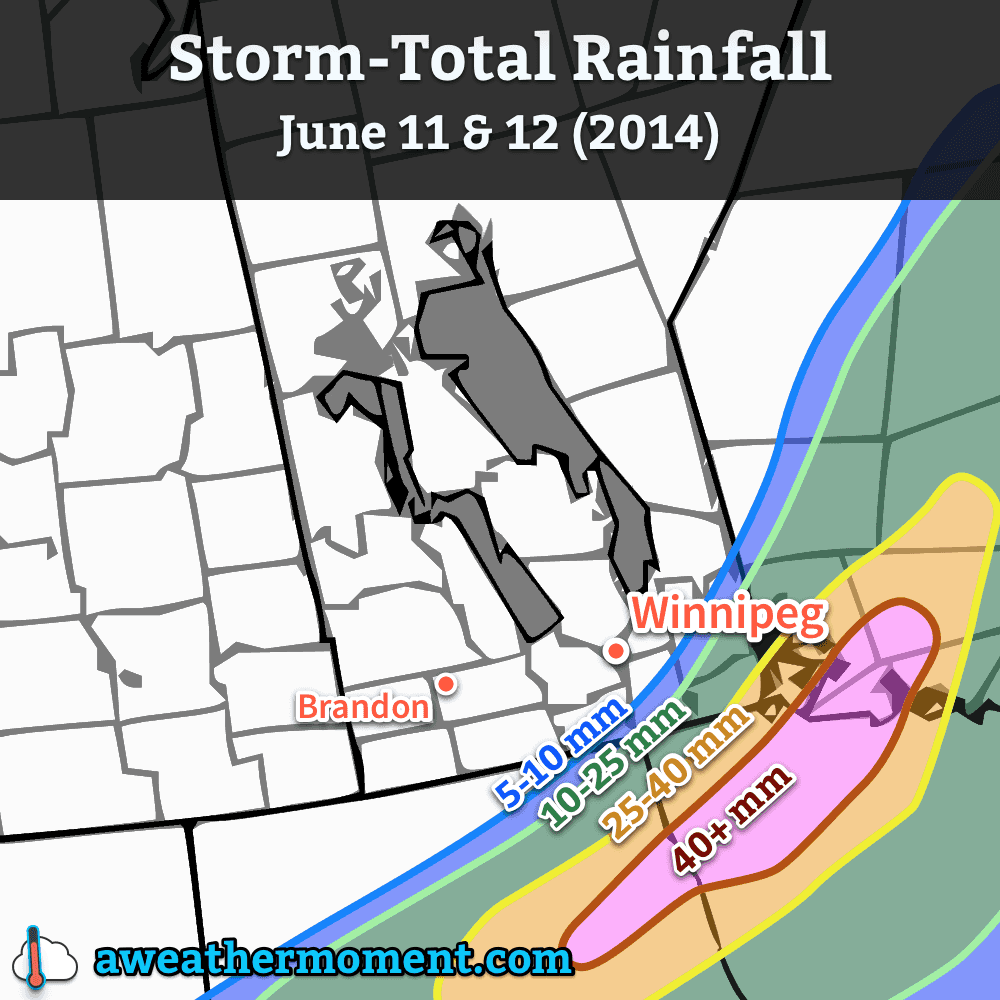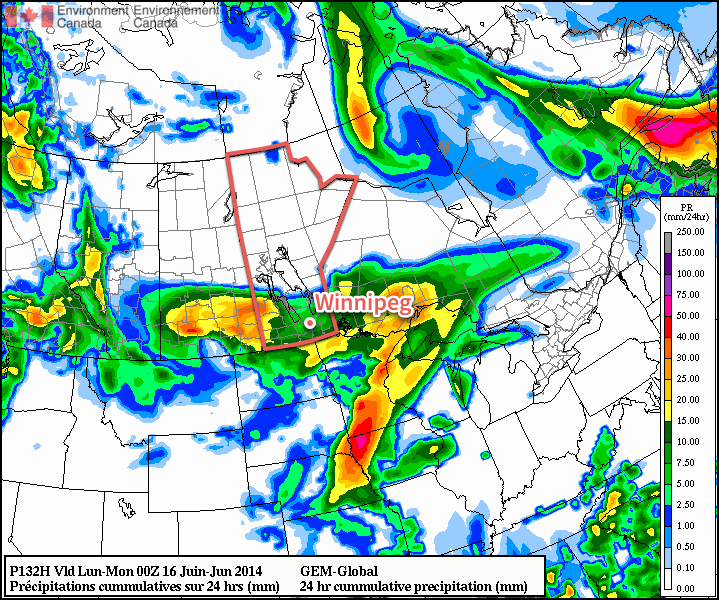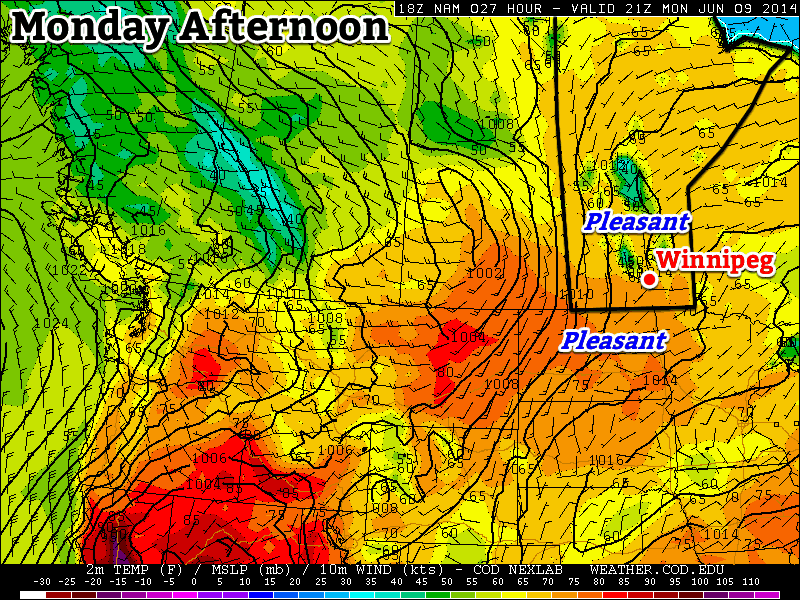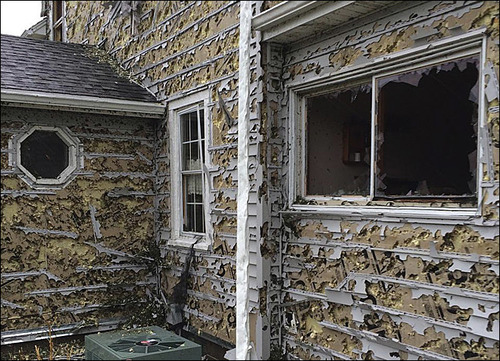A powerful low pressure system drenching North Dakota and Minnesota will brush the southeastern portion of the province today. For the rest of us, fairly quiet weather will prevail with slightly below-normal temperatures.
The main weather story today will be the low pressure system working its way through North Dakota and Minnesota. Although this system will spread cloud through the entirety of the Red River Valley, rainfall will be constricted to the southeastern portion of the Red River Valley into SE Manitoba. At this point, it looks like the main area of rain will remain south and east of Steinbach. There’s a slight chance of showers backing into Winnipeg and the SW Red River Valley (Altona, Winkler), but if any precipitation managed to push that far north or west, it would remain very light.

Otherwise, it will be a mainly cloudy day with perhaps a few sunny breaks through the first half of the day. Winds will be a little breezy out of the north at 20-30km/h. Temperatures will top out around 17°C. Clouds will begin to push off to the east overnight, however the bulk of the RRV won’t see complete clearing until Thursday morning. Overnight lows will be near 8°C.
Cool But Pleasant End to the Week
Thursday and Friday both look to be quite nice, with temperatures some 5°C below normal returning to seasonal values. Thursday will see clearing skies as temperatures climb to 18°C. Winds will be light out of the north as a ridge of high pressure begins working its way eastwards into Manitoba. There may be a slight chance of some shower or thundershower activity over western Manitoba, but here in the Red River Valley things look sunny and dry. The overnight low on Thursday will generally sit around 6°C; this will likely be the coolest night for the next while.
Friday will be another mainly sunny day with warmer weather returning as the ridge of high pressure shunts off to the east and a southerly flow redevelops over the province. Under mainly sunny skies the temperatures will climb to near 23°C. Cloud will move into the Red River Valley late in the afternoon or the evening and the next system pushes into southwestern Manitoba. Temperatures will drop to around 13°C.
Unsettled Weekend
This weekend will be marked by unsettled weather as a major low pressure complex moves into Southern Manitoba and the Northern Plains of the United States. Rain, with the chance of thundershowers, will push into southwestern Manitoba on Saturday morning. There’s uncertainty as to what will happen after that, but at the time it appears that rain will likely slide eastwards along the international border through the day.

Afterwards, the general trend looks to be a shift northwards with the precipitation towards the northern Red River Valley, and then things push out late in the day on Sunday. Daytime highs on the weekend should rest in the low 20’s while overnight lows hover near the 11-12°C mark.



